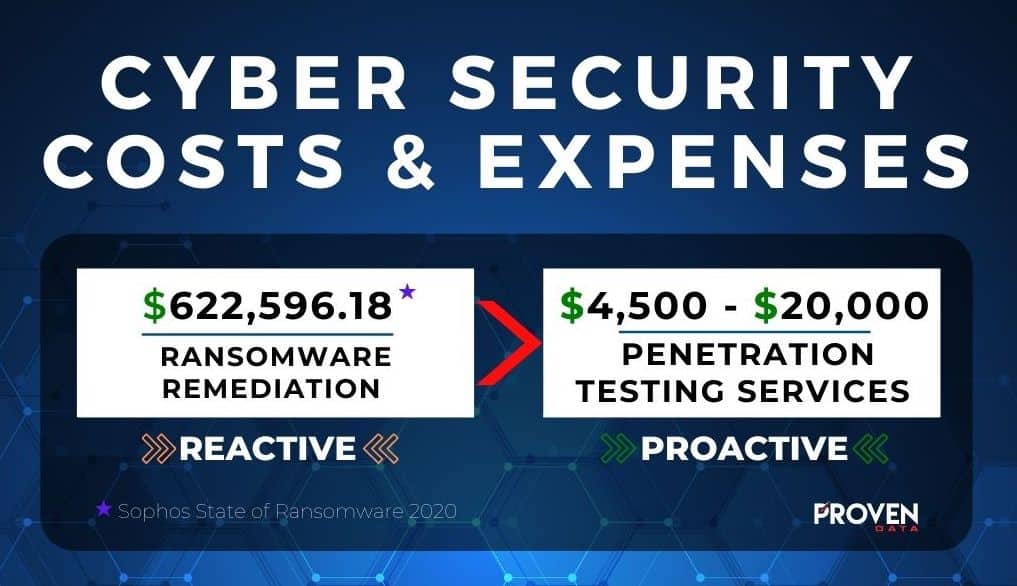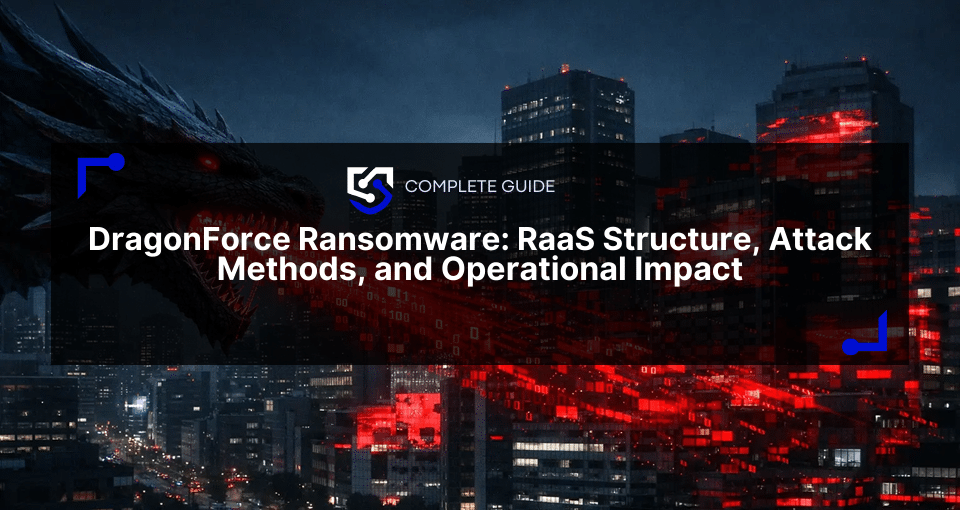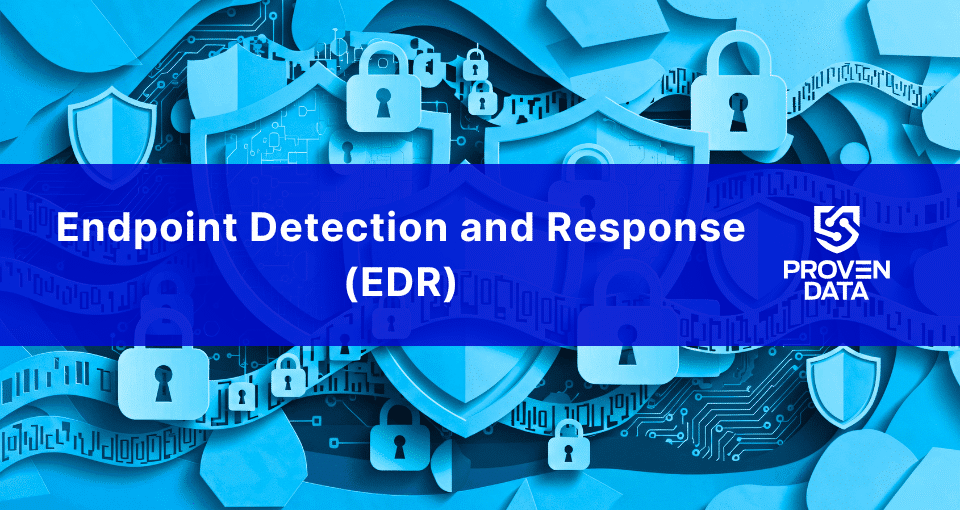You know you need to improve your cyber security. You’re concerned about cyber attackers compromising your network security and crippling your business. You’ve heard of penetration testing, but is it the right option for your organization?
You may be asking questions like:
- How do I find out where there are security vulnerabilities?
- How could an attacker gain unauthorized access to my network?
- Can my business be hacked?
- Do I have an incident response plan that is effective?
- How would members of my organization respond to a cyber attack?
If you need answers to any of these questions, then you are in the right place. At Proven Data, we assist businesses with creating custom-tailored preventative cybersecurity solutions. We are standing by to help you discover and resolve your network vulnerabilities before a cyber criminal takes advantage of those vulnerabilities.
In this blog, you will discover what penetration testing is and how this assessment can help you improve your network security.

Learn what penetration testing is
- Know what to expect to pay for penetration testing
- Understand how penetration testing services could save you the cost of recovering from a cyber attack
What is penetration testing and why do I need it?
In a nutshell, a penetration test is an authorized, ethical hack into a system to discover and validate security vulnerabilities in your network environment.
According to Verizon’s 2020 Data Breach Investigations Report, 70% of data breaches were caused by attacks from outsiders who were able to penetrate the target network.
Additionally, according to Trend Micro’s Annual Cybersecurity Report, there were 119,000 threats detected per minute in 2020.
Understanding how to secure the holes that allow these attacks to happen is critical to avoid becoming a cyber crime victim.
Penetration testing will:
- Detect weaknesses in your security environment
- Discover the effectiveness of current security defenses against unauthorized intrusions
- Attempt to exploit vulnerabilities within web applications and on the computing infrastructure to determine how access can be gained and maintained
- Test vulnerabilities to determine how long the attacker can remain on the network undetected
- Check the strength of security policy compliance
- Test organization member’s level of security awareness
- Evaluate the effectiveness of your incident response plans
 A successful Penetration Test provides a point-in-time snapshot of your defenses. However, to maintain long-term security, a more continuous and comprehensive strategy is needed. This is the goal of a holistic
A successful Penetration Test provides a point-in-time snapshot of your defenses. However, to maintain long-term security, a more continuous and comprehensive strategy is needed. This is the goal of a holistic How much do penetration testing services cost?
Now that you understand what a penetration test can do, you’re probably asking, how much will penetration testing cost me?
The average cost of a penetration test ranges from $4,500 to $20,000 and will usually take a minimum of 20 hours for a basic test. The more extensive the network and the more complex the security environment, the more expensive and lengthier the test will be.
The factors influencing the cost and hours needed to conduct a penetration test include:
- Type and scope of the penetration test agreed upon at the start of the interaction
- Size of the network infrastructure
- Level of expertise of the pen tester
- Whether the pen test is automated vs. manual work
- The time it takes to complete the pen test dictated by the environment size
Is penetration testing worth the cost?
If the cost of penetration testing services seems high, it is important to put the cost of a pen test in perspective against the cost of recovering from a cyber incident.
Sophos State of Ransomware 2020 report surveyed 5,000 IT managers across 28 countries to determine that in the United States the average ransomware remediation cost is $622,596.18.
Additionally, the average cost of a data breach in 2020 is $3.86 million, according to a report from IBM and the Ponemon Institute.
Below, we compare the costs of both reactive and proactive cyber security expenses.

It is more cost-effective to prevent a cyber crime than recover from an attack.
In addition to these costs, cyber attacks can have devastating consequences including business downtime and brand reputation damage. The key to avoiding these unfortunate scenarios is taking proactive action. Based on the data, it is clear that the cost of a penetration test is worth the investment.
When do I need to conduct penetration testing?
To maintain the best security management, you should schedule a penetration test at least annually.
Penetration tests should also be conducted more frequently based on the magnitude of changes to the organization’s computing environment.
The changes that should require a penetration test include:
- The addition of new network infrastructure or applications
- Any significant modifications to the network
- Change in physical location
- Addition or removal of any major security controls
- Application of security patches
- Modification of endpoint user policies
You should tailor the frequency of penetration testing to fit your organization’s specific needs.
Factors that influence the frequency of penetration testing include:
- Size of the organization – the larger the organization, the more potential attack vectors
- Cybersecurity budget – dictates how often you can conduct penetration testing
- Compliance regulations – guides how often you are required to check security frameworks to ensure compliance
- Type of data stored on your network – the kind of data and the confidentiality requirements provide a basis for the frequency of pen testing
Types of penetration testing
If you determine penetration testing could be a valuable cyber security service for your organization, your next step is to choose the most effective type of pen test for your situation.
Below you will find a list of common penetration tests that assess varying scopes of the target security environment.
1. White box pen test
During a white box (or open box) penetration test, the pen tester has complete access to system information including source code, network maps, and security architecture documentation.
A white box pen test simulates a targeted attack on a specific system utilizing as many attack vectors as possible.
White box pen testers will:
- Work through data in the environment to identify weaknesses in protection
- Perform static code analysis
- Gain familiarity with source code analyzers
- Assess logical vulnerabilities, potential security exposures and security misconfigurations
- Determine the effectiveness of defense measures
White box penetration testing is the most comprehensive internal and external assessment of vulnerabilities that can only be viewed with privileged access to applications and systems.
2. Grey box
Limited information about the security environment is given to the pen tester during a grey box pen test.
A grey box pen test usually begins with the pen tester being provided with login credentials. This type of pen test focuses on understanding attack vectors that someone with privileged credentials could exploit.
Grey box penetration testing combines the methods of white box and black box pen testing.
Grey box penetration testing will:
- Discover and identify security risks in code structure or unsecured applications.
- Identify context-specific errors in web systems
- Effectively simulate an insider attack when elevated privilege is obtained.
Since pen testers already have access to background information about the security environment during a grey box pen test, this type of test is relatively efficient and streamlined.
The reconnaissance collection stage is eliminated to save time and cost and pen testers can concentrate on exploiting vulnerabilities in potential high-risk systems instead of spending time to make the initial discovery of the systems.
3. Black box
During a black box penetration test, the penetration tester is not provided with any information about the security environment.
A black box pen test models an attack by a cyber criminal without any access privileges.
A black box penetration will:
- Conduct reconnaissance to gain access to sensitive data
- Simulate user activity to test how the security system defends your environment
- Evaluates relevant subsystems
- Test database, web and application server security
Because this type of penetration test requires the tester to obtain all information about the security environment themselves, it is the most time consuming and costly type of penetration testing services.
Additionally, black box pen testing can overlook internal vulnerabilities in your environment since it focuses predominantly on outsider attack methods.
4. Covert pen test
A covert penetration test (also known as a double-blind pen test) occurs when almost no one in the organization is advised that a pen test will occur.
Even high-level IT and security professionals are not pre-warned about the test to accurately assess authentic incident response actions that they would deploy during a real attack.
Covert penetration testing will:
- Test technical security controls
- Discover the effectiveness of the responses from IT staff to perceived security threats
- Determine staff understanding of the organization’s security policy and incident response actions
Covert pen testing is mainly designed to investigate the damage a cyber attack could cause to your security environment, and whether it can be detected.
How do penetration testing services work?
Now that you understand more about penetration testing, what does the actual pen test process look like?
We’ve outlined the five basic steps a penetration testing service will follow, which include:
- Outlining goals and objectives in a pre-test interaction
- Gathering reconnaissance information
- Identifying targets and attack vectors
- Attempting to exploit vulnerabilities
- Analyzing, reporting and presenting recommendations
Next steps to securing your network
If you decide penetration testing is a good fit for your needs, the next step is understanding the type of test that will meet your goals as well as the process you should expect.
At Proven Data, our cyber security experts are standing by to answer any questions you have on your journey to improve your security.
Consult with a cyber security professional to discover the right first step for your organization.
Need help finding customized penetration testing for your organization?
Talk to a cyber security expert today
Request a penetration test consultation



